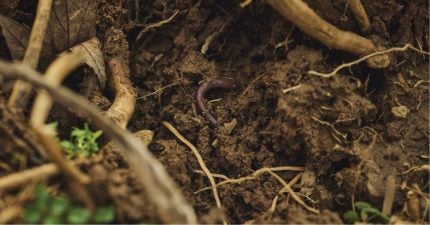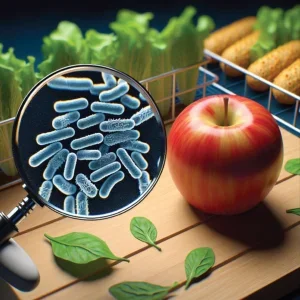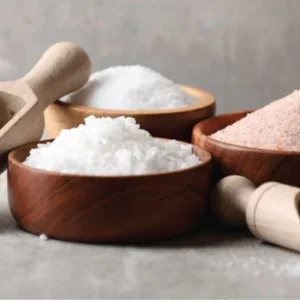
What we eat or drink is so often framed as a matter of individual choice. To an extent that’s true – you clearly have some say over whether you reach for a biscuit or a banana, or whether you grab a sugary soda when a glass of water would suffice. But just as important is the nexus of external factors within which you ultimately make that decision.
It stands to reason that, if you live in a food desert with limited access to fresh produce, you’re less likely to meet nutritional goals than someone with an organic supermarket down the street. That’s also the case for disabled people, or those with mental and physical health conditions. It’s a similar story for some minority ethnic groups – and for anyone whose life circumstances have taken a difficult turn.
The biggest variable here is poverty. According to a UNICEF report from 2022, 3.1 billion people worldwide can’t afford a healthy diet. Even within the comparatively wealthy global north, millions of people can’t be sure where their next healthy meal is coming from, including 44.2 million in the United States alone.
In 2021-22, 7% of the UK population was defined as being in food poverty, while 2.1 million people used food banks. Brits belonging to the most deprived fifth of the population would need to spend half their disposable income on food to meet the government’s Eatwell healthy eating guidelines. (These include five portions of fruit and veg a day, a good balance of starchy and protein-rich foods, and fatty and sugary foods only in smaller quantities.)
All this is to say that, collectively, we’re a long way off achieving the United Nations’ Sustainable Development Goal 2: to create a world free of hunger by 2030. In fact, the situation has regressed considerably in this age of polycrisis. With food production declining and prices soaring, the world is back at hunger levels not seen since 2005.
Unfortunately, less nourishing food is usually bad for the planet too. As one Brazilian study found, meeting nutritional requirements increased the cost of an average diet by 14-24%, but reduced greenhouse gases by 10-27%.
Unsurprisingly, these tensions are reflected by agrifood giants themselves. “Global food systems are under constant pressure,” emphasises Alexander Hennig, a spokesperson for Bayer Crop Science. “Geopolitical conflicts and impacts from the pandemic have been causing supply chain issues. Farmers have to pay more for agricultural inputs, and transportation has become more expensive. And above all, we are facing already severe impacts of climate change like droughts, floods and higher pest pressure. These factors all lead to higher prices and make the food system more vulnerable.”
Bold transformations
Solving these problems will mean enacting change on multiple fronts. For individuals, it might mean opting for frozen fruits and veg; buying and cooking in bulk; and gravitating towards legumes rather than meat as a source of protein.
The food writer and anti-poverty campaigner Jack Monroe has also suggested doing a detailed stocktake of your cupboards before writing a shopping list – and then splitting the list into proteins, fruit and veg, carbohydrates and snacks to ensure a balanced diet.
All the same, many individuals maintain they genuinely can’t afford to eat healthily – and the data is on their side. According to the Food Foundation, 1,000 calories worth of unhealthy food comes in at around £4.50. Achieving the same energy intake with more nutritious food will set you back £10.
To put it another way, the real levers of systemic change are governments, civil society organisations, and businesses – ideally in collaboration. One example is the World Business Council for Sustainable Development (WBCSD), a CEO-led coalition of more than 200 companies. The WBCSD believes that the major challenges we’re facing – the climate emergency, nature loss, and mounting inequality – are interconnected, and that addressing them requires a ‘bold transformation agenda’.
63%
The percentage of household income that would need to be devoted to food – if the poorest households in lowincome countries were to eat healthily.
The State of Food Security and Nutrition in the World 2021
In terms of food and agriculture, this means working towards what the organisation calls a ‘regenerative and equitable food system producing healthy, safe and nutritious food for all’. Its suggestions include scaling up climate resilience, intervening along food supply chains, and making it easier for consumers to alter their behaviour. The WBCSD has also joined the Zero Hunger Private Sector Pledge, which encourages companies and funds to invest in ‘high-impact intervention areas’.
For food manufacturers, the goal is to improve nutrition at an accessible price point. One example is Nestle’s Bear Brand, which sells fortified food products to lower-income consumers in the Philippines. These products are formulated to address local nutrient deficiencies, using locally available raw materials to slash production costs.
Other players in the food system will have different touchpoints. For instance, the bioscience company DSM undertakes large-scale rice fortification, helping poorer communities obtain more micronutrients from their rice-heavy diets. PepsiCo, for its part, has pledged to invest $100m in positive agriculture and food security initiatives by 2030, while Unilever has been working with partners to help smallholder farmers improve their livelihoods in Madagascar.
“Agriculture needs to transform to help farmers adapt to climate change, increase farm productivity, and increase food, feed and fuel output for a growing population while renewing nature.”
Alexander Hennig
Agricultural innovation
As an agricultural company, Bayer Crop Science seeks to make a difference at the earliest and most foundational part of the food value chain. A member of both the WBCSD and the Zero Hunger Private Sector Pledge, the company believes food security and climate change are two sides of the same coin. It currently invests €2.6bn a year on agricultural innovation, with a view to helping growers produce greater yields with fewer inputs.
“We are committed to providing farmers with tailored solutions integrating critical tools to plant, grow and protect their harvest,” Hennig explains. “For instance, new breeding technologies like gene editing that can help make plants more resilient to weather extremes or pests. This means we can reduce the use of plant protection at the same time. Our way forward is an approach to regenerative agriculture, an outcome-based system that combines practices like no-till farming with innovative seeds, modern crop protection and digital technologies.”
This task holds some urgency. By 2050, the world will need to feed ten billion people on less land – all with less water and fewer resources. Agriculture could play an integral role in reducing greenhouse gas emissions, promoting biodiversity, and enhancing resilience in food systems. It goes without saying, however, that this will only be possible through scientific innovation.
As Hennig puts it: “Agriculture needs to transform to help farmers adapt to climate change, increase farm productivity, and increase food, feed and fuel output for a growing population while renewing nature. In other words, producing more with less resources while restoring more.”
There are plenty of good examples here in practice. For one thing, Bayer has rolled out special maize varieties in Africa, which are more droughttolerant and resistant to certain pests. In India, it has created hybrid tomatoes that can withstand soaring temperatures, while short-stature corn in the US is designed to cope better in storms and heavy rain.
32%
Proportion of the worldwide disease burden that would be removed if malnutrition were eradicated.
www.ncbi.nlm.nih.gov
Bayer is also working on biological solutions to partly replace the need for synthetic fertiliser, reducing environmental impact without sacrificing yield. That’s echoed, Hennig adds, by attempts to shift how produce is grown. The company is looking to bring a ‘direct-seeded rice system’ to the major rice-producing countries – which involves sowing the rice seeds directly into the fields, as opposed to transplanting existing seedlings.
“This will help farmers to reduce water consumption by up to 40% and greenhouse gas emissions by up to 45%, and farmers’ dependence on scarce and costly manual labour by up to 50%. This will be transformational to rice production,” says Hennig.
Beyond that, Bayer works to support smallholder farmers, whose daily work is crucial for food security in many African and Asian countries. It hopes to reach 100 million smallholders by 2030, providing them with training, guidance and crop protection tools to bolster productivity. Already, Bayer is halfway to meeting that target, while also launching a Nutrient Gap Initiative – this aims to expand access to essential vitamins and minerals to 50 million people a year by 2030.
Thinking about the scale of global food insecurity and malnutrition, it is easy to feel despondent – not least because individuals can only do so much. Yet as the work by Bayer vividly shows, the crisis is not going unheeded, with many public and private sector organisations intent on finding solutions. Whether or not we can meet the lofty UN goal of ‘creating a world free of hunger’, helping more people eat better on a budget is surely more than a pipe dream.
“Although nutrition starts with getting enough calories, good nutrition ultimately requires people to consume varied food groups, ensuring a diverse diet,” summarises Hennig. “We aspire to a future in which the macro and micronutrient needs of individuals of all ages across the globe are met and malnutrition is a thing of the past.”






